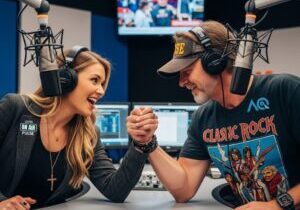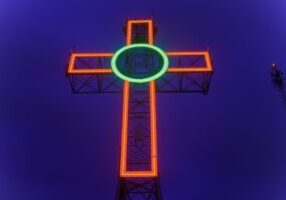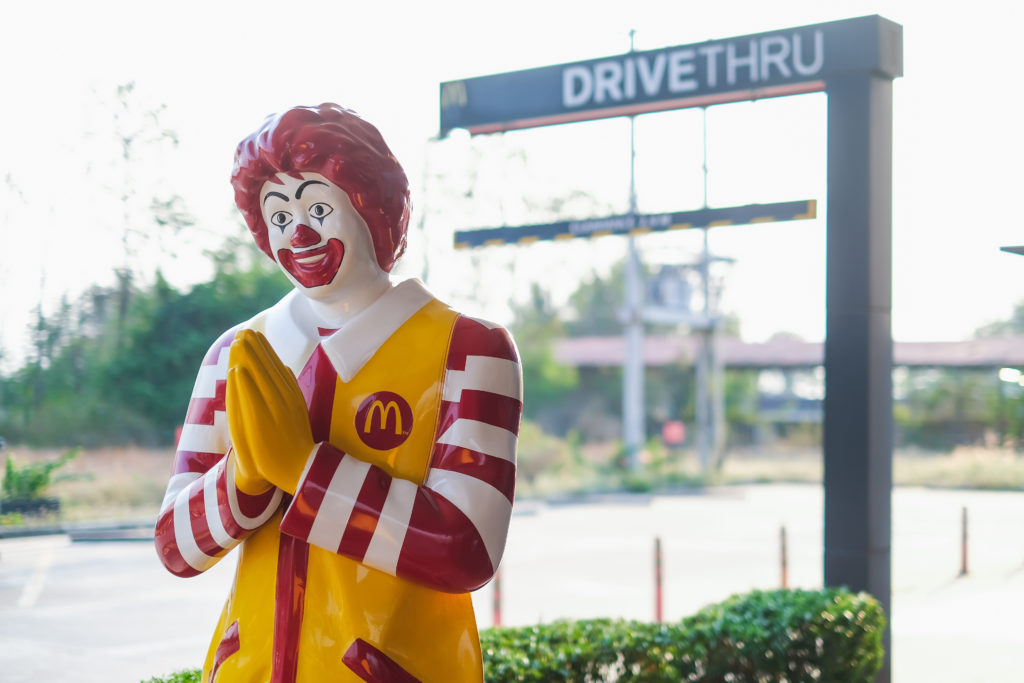
October is one of my favorite months. Pro and college football are in high gear, and of course Major League Baseball enters playoff mode. For the first time in a long time, I’ve got lots to watch this October, thanks to the surprise team of the year – perhaps in all sports – my Detroit Tigers.
Not only did they improbably make the playoffs via the Wild Card for the first time in a decade, they did so in dramatic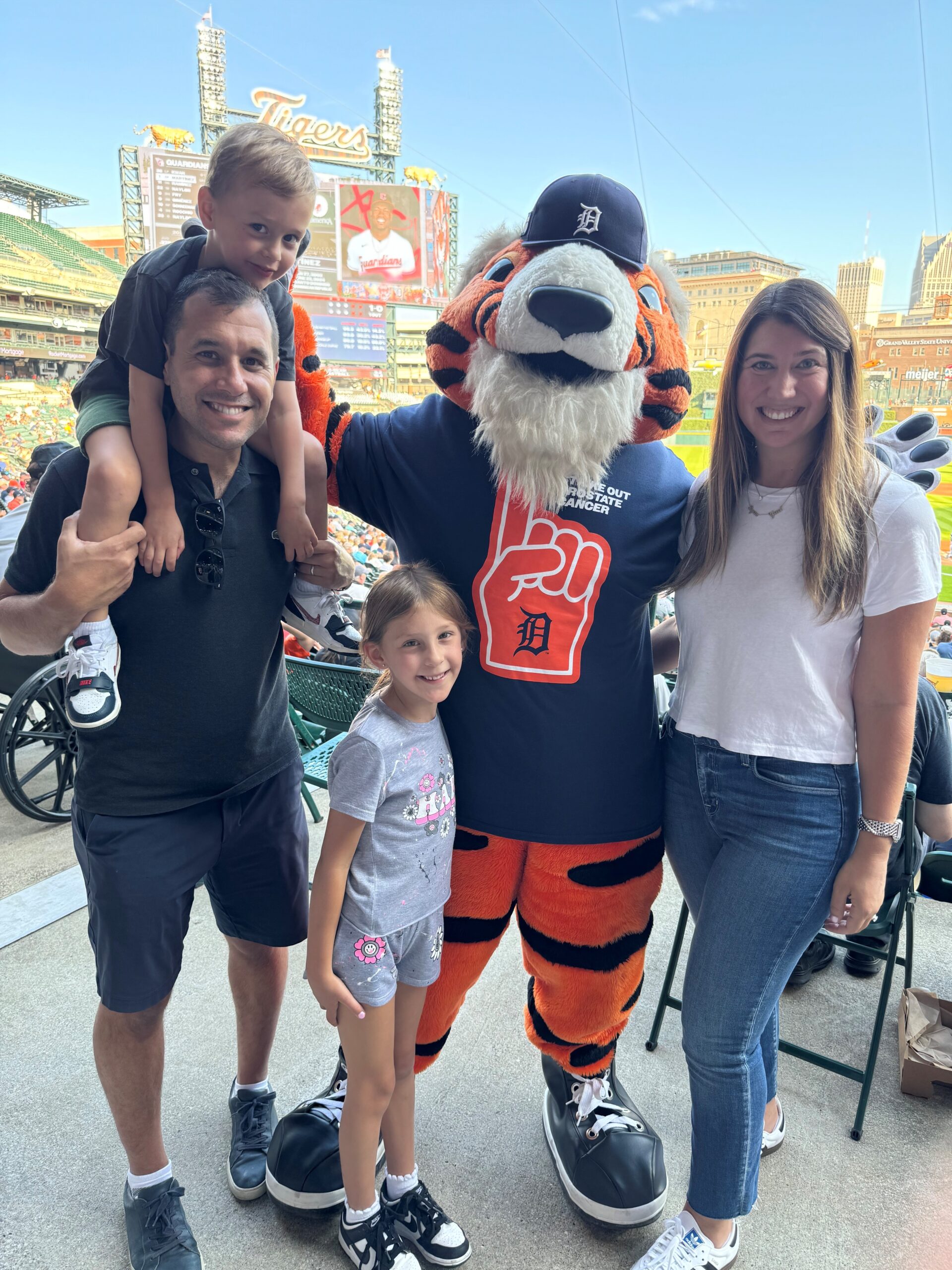 fashion, forging a wild come-from-nowhere run during the last six weeks of the regular season. Yesterday, they swept Houston to now enter the next rung of the playoffs. Just like in radio, in sports, it’s often about WHEN you get hot.
fashion, forging a wild come-from-nowhere run during the last six weeks of the regular season. Yesterday, they swept Houston to now enter the next rung of the playoffs. Just like in radio, in sports, it’s often about WHEN you get hot.
Pictured is the Tigers’ mascot Paws, posing with a family group of mine from out of town who made their first-ever visit to Comerica Park back in July. The Tigers won that game 1-0, we stayed for all nine innings, and both adults and kids had a great time at the ballpark.
Unlike radio, baseball and many other sports are mascot crazy. And why not? Mascots are family and merch friendly, they add a fun element to the game, and they are highly visible. And they are sales-friendly. That might come in handy right about now. – FJ
October 2019
When the Classic Rock format started to take flight back in the mid-’80s, my first big sign-on was KCFX in Kansas City. It was the very first station in the portfolio of Jay Hoker – my former boss at WRIF. There was a lot riding on this Class A station going up against the big dogs in a big market.
The station was called the Fox, and Hoker wanted a mascot. I did not. In my view, Classic Rock was too cool a format to have a cheesy, cartoonish mascot. But Hoker insisted, believing a friendly, animated version of the Fox would be a hit at locations and provide a persona to the station.
He was right. I was wrong.
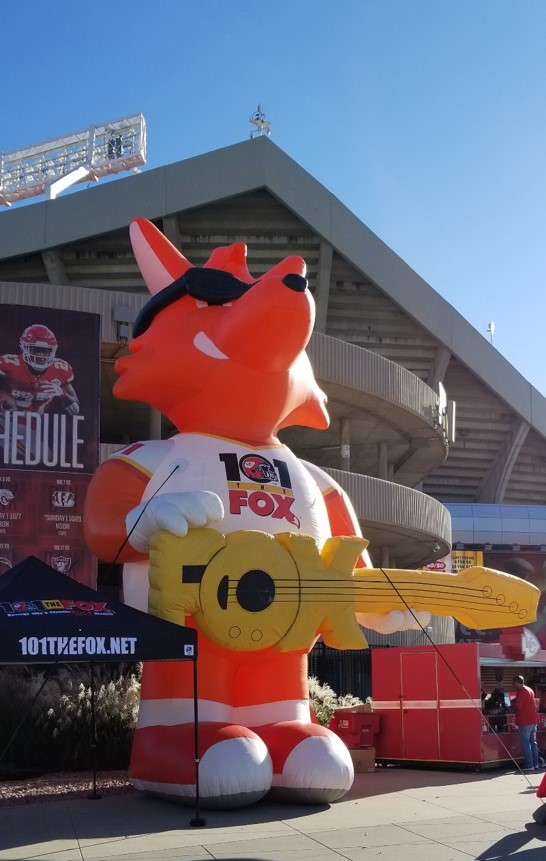
KCFX’s “Foxzilla” at Arrowhead Stadium
The Fox mascot quickly became the face of the station. Jay bought a 30-foot high inflatable that was instantly embraced by advertisers, station fans, and their kids. Our furry Fox mascot (dubbed “Foxzilla”) helped humanize and brand our station that was trying to find its way through a tough competitive battle.
As I learned in the process, it gave a fledgling radio station presence at concerts, community events, and other locales it would not have had. And in many cases, the bigger-than-life symbol of our radio station helped grow The Fox’s awareness and cume.
Jay ended up licensing his Fox to more than a dozen other stations, including WRFX in Charlotte, another station I helped sign on. More than three decades later, KCFX, WRFX, and other stations are still proudly using that Fox mascot.
Dan McClintock, program director of market-leading KCFX, tells me the station continues to lean heavily on “Foxzilla.” There’s even a “junior” version (20-feet) as well as a “Sly Fox” version – a suit an intern (or whomever) wears at promotions to hang with kids and high-five adults.
And thanks to smartphones, taking selfies with these versions of KCFX’s mascot has become a popular pastime, especially on game days for the Chiefs, many of which get posted on social media fan pages. Dan tells that even “guests” who support the opposing team love these photo ops with “Foxzilla.”
KCFX has been the flagship play-by-play station since the days I was there, a deal originally put together with then-GM Bill Newman. Today, the Chiefs and KCFX represent one of the most successful long-term radio/NFL relationships.
And at the core of the station’s brand identity is the Fox character, a vehicle that has helped this radio station stand apart from the scores of other radio outlets in Kansas City for more than 30 years.
And that got me to thinking about how more radio stations are using audio to brand themselves as well. In the past year, I’ve had the chance to learn more about Veritonic, a company that tests the power and memorability of audio signatures.
We’ve blogged about their methodology, a fascinating way to better understand the power of audio for brands. It turns out that some of the dullest businesses – especially insurance companies – have made great use of sonic logos to set their brands apart.
Nationwide, Liberty Mutual, Farmers, and others have made brilliant use of these audio logos that get in your head and help make forgettable brands very memorable. After all, most of us don’t enjoy buying insurance, and it’s easy to confuse the many different companies selling it. So, when those sonic signatures are strategically and cleverly produced, they get in your head, creating strong awareness for brands that used to get lost in the shuffle.
But as I started thinking about these insurance giants, it also occurred to me that most are now using cute, clever, witty, and snarky mascots to drive recognition, recall, and positive imagery. Consider the following:
GEICO’s gecko
AFLAC’s duck
Liberty Mutual’s emu
The Hartford’s buck
And then there’s Progressive’s Flo and Esurance’s Dennis Quaid (who are, for all intents and purposes, mascots).
Mascots are everywhere, and they’ve been around forever. The Michelin Man, Mr. Clean, the Jolly Green Giant, Mickey Mouse. Even Santa Claus is a mascot – perhaps the best known and most loved of them all.
Fast food chains have been especially active in the mascot game, starting with McDonald’s and their clown, Ronald. Wendy’s, KFC, Long John Silver’s, and so many others make use of iconic mascots.
Let’s not forget Burger King. Personally, the King has always creeped me out, but the brand has (mostly) stuck with him. And last week, Burger King put their royal mascot to work, showcasing a new partnership with Uber Eats.
In what sounds an awful lot like a radio promotion, the King delivered Whoppers to several hundred L.A. area homes.
And of course, there was a tech angle to the promotion. The agency, MullenLowe, scouted homes for Ring doorbells, ensuring great video opportunities for Burger King’s social media pages.
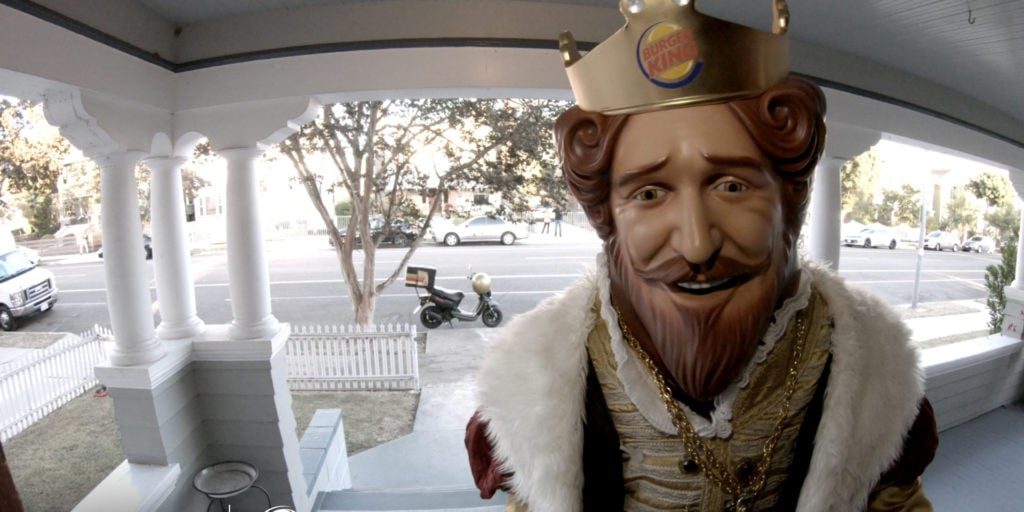
Courtesy: Burger King
Not to be left out is KFC, these days cleverly using different actors and comedians to play their mascot, Southern gentleman Colonel Sanders.
One of my favorite versions from the series is the great comedian Norm MacDonald, donning the white suit and western bow tie to play his version of the beloved colonel, a parody of the original:
So, it begs the question why more radio stations don’t take the opportunity to humanize and personalize their brands with mascots. It is clear from so many brand marketing success stories that mascots simply work.
And when we shift to radio, there are enough eagles, bears, bulls, sharks, and yes, foxes on the airwaves. There’s even a rat in New Jersey and that iconic pig in St. Louis, Sweetmeat.
Why wouldn’t more radio stations create mascots or breathe life into existing ones, and turn them into your “6th man” – or pig? At a time when many radio stations are hard-pressed to fulfill sales and promotional commitments, a mascot can be better than sending a part-time jock (with all due respect) to a car dealer, phone store, or mattress outlet.
So why would radio RIF their own mascots?
As radio brands have to work harder to stand out, popular mascots that garner attention from multi-generations can be smart marketing tools.
Smart like a fox.
Originally published by Jacobs Media



